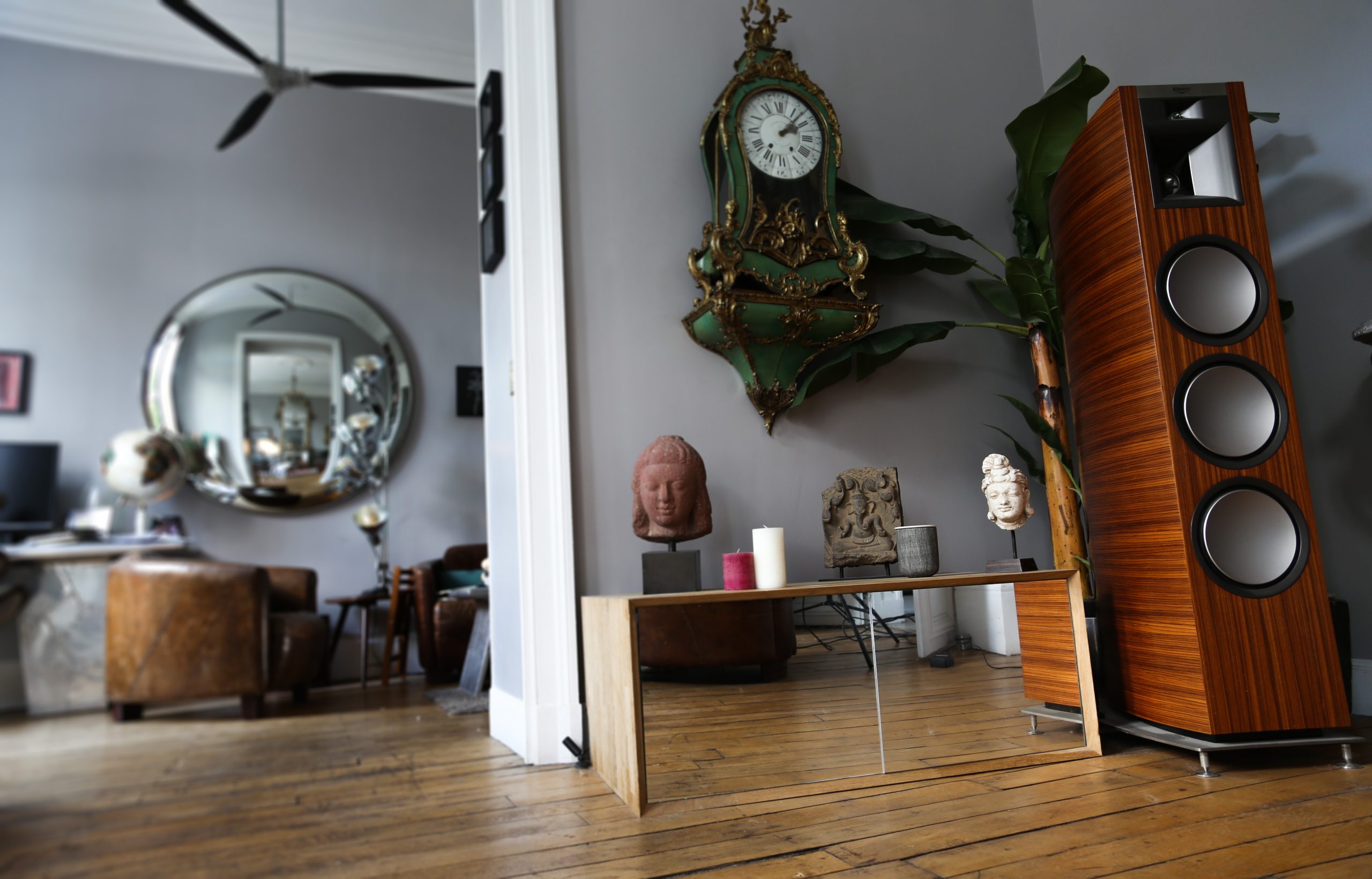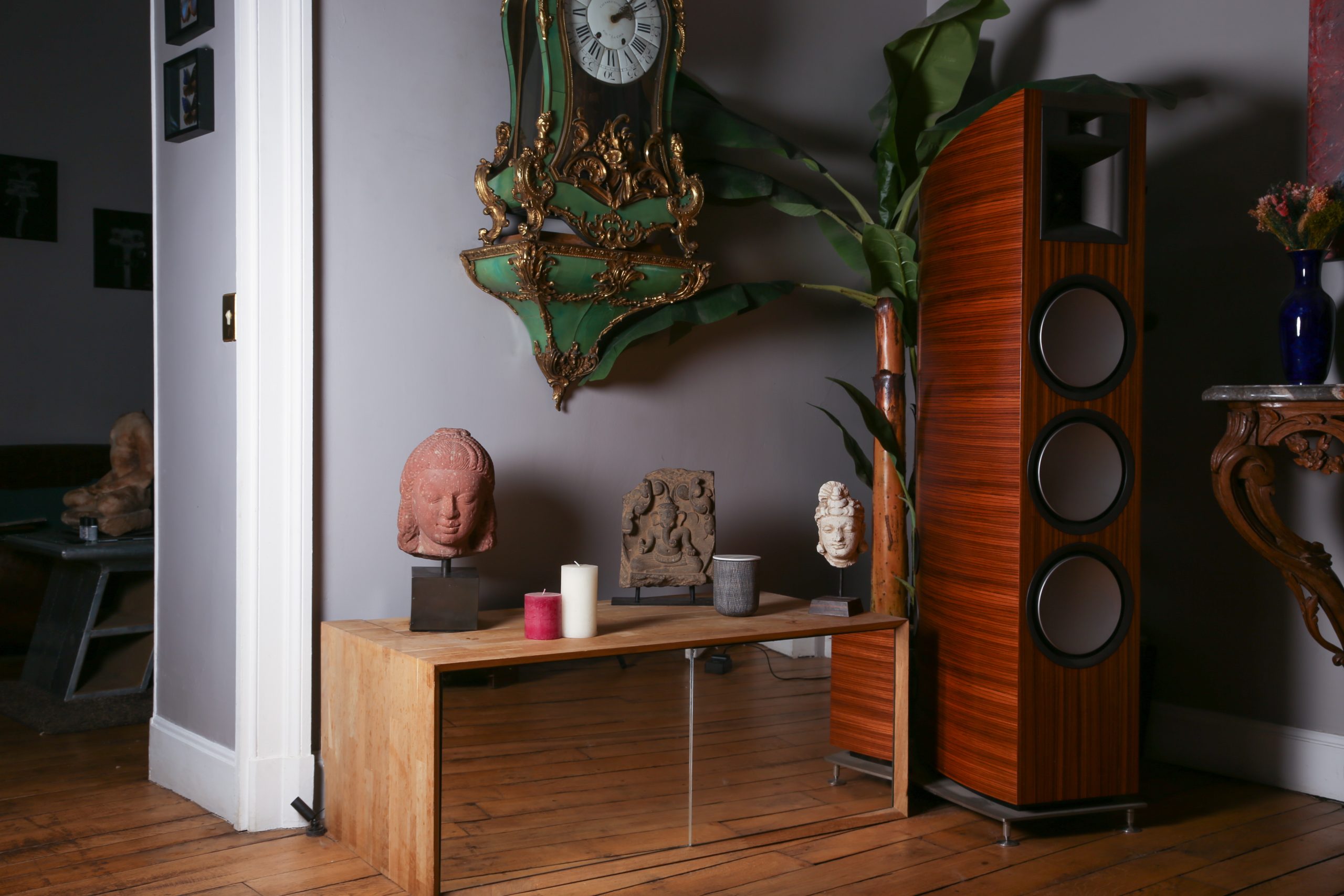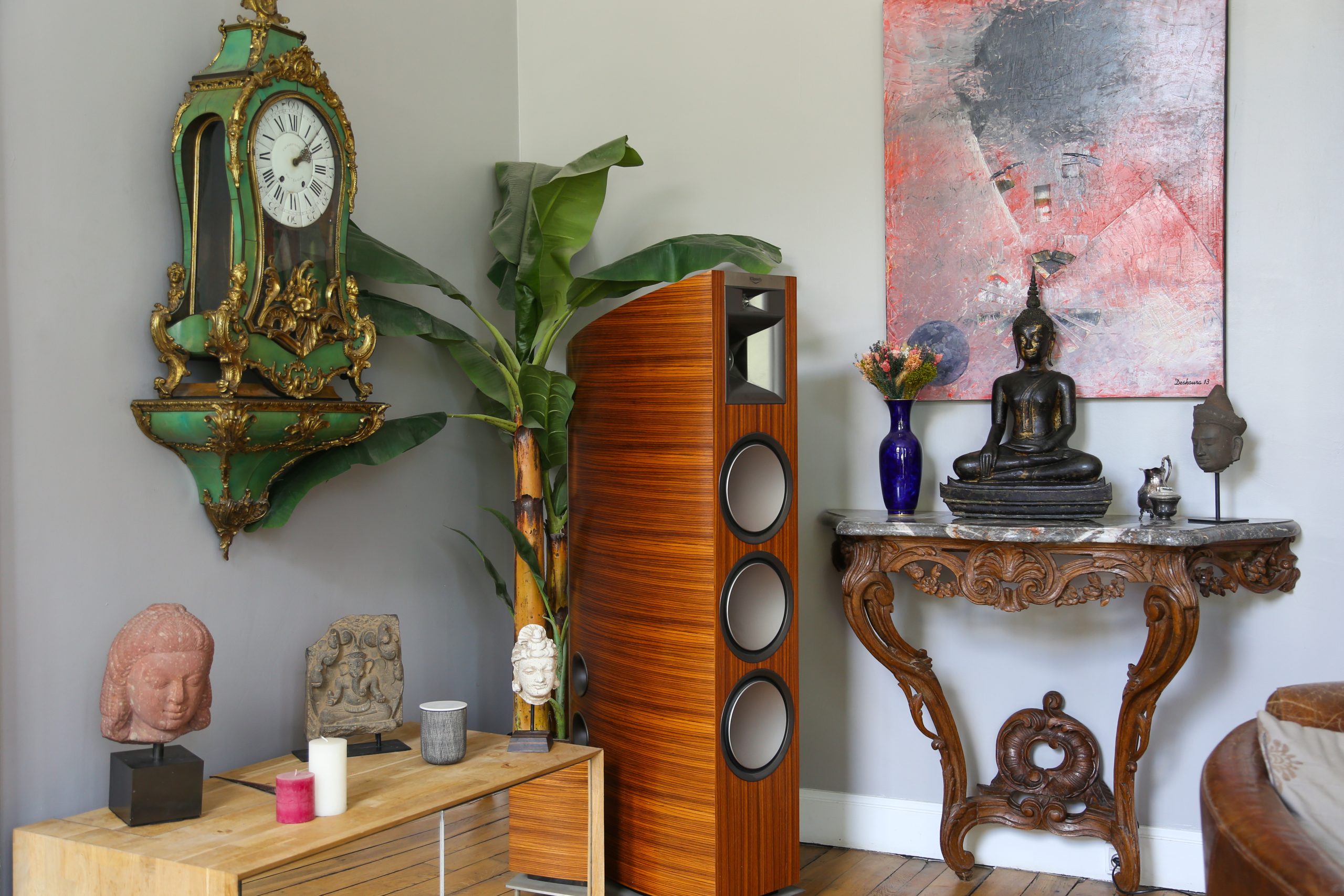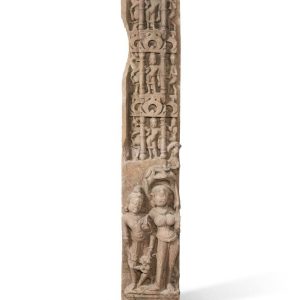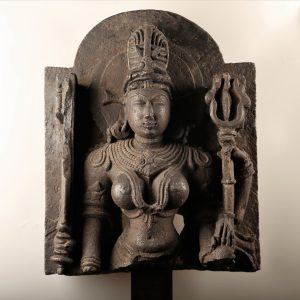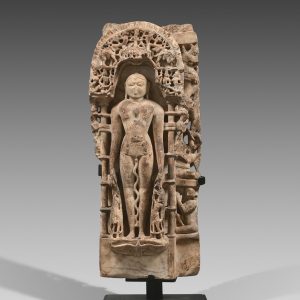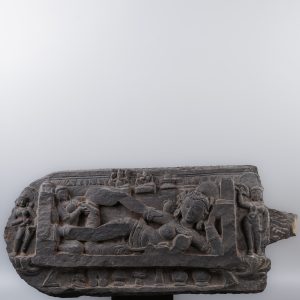Head of a Deity
25 000,00€
Red sandstone
Northern India
5th – 6th century
H. 36 cm or 10 ⅝ in
Description
Very interesting head of a deity, typical of the great Gupta period. We must first focus on its size: 27 cm high (or 10 ⅝ in), it is impressive! Dated from the 5th-6th centuries, it is made in this mottled pink sandstone characteristic of the region of Mathurā in Northern India.
The piece perfectly illustrates the so recognizable style of the region of Mathurā during the Gupta period. The face is full, the eyebrows strongly arched, the eyes very wide and prominent with hemmed eyelids, the mouth is fleshy and well defined with the corners of the lips hollowed out, sketching an enigmatic smile. Above all, the very elaborate treatment of the hairstyle should be noted. It is a complex arrangement of braided locks and circular curls carefully arranged around a central parting and cascading down to the shoulders, covering the ears. The strands of hair, delicately detailed, seem to be held on the top with a flower-shaped bun.
One of the three horizontal folds (trivalī) at the base of the deity’s neck can be seen: a convention corresponding to one of the canons of beauty in ancient India, but which also indicates spiritual pre-eminence and divine greatness. Other representations of deities with similar hairstyles exist: a lintel of deities personifying the planets kept at the Indian Museum in Kolkata depicts Jupiter, Venus and Saturn in their classical male form and with quite comparable hairstyles. A god in the Museum für Asiatische Kunst in Berlin (Ident.Nr. I 15) is also to be compared with this head.
Provenance: Private collection, UK, acquired from Jeremy Knowles in 2008.





